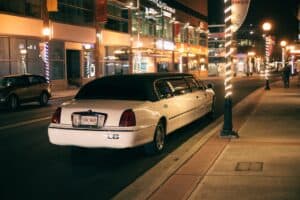
Tipping is an integral part of the service industry, and limo drivers are no exception to this practice.
Whether you’re celebrating a special occasion or simply need a ride to the airport, tipping your driver is a gesture of appreciation for their professional chauffeur services. However, determining how much to tip can be confusing for many people.
This article will provide best practices for tipping a limo driver, including understanding the customary tipping range, assessing the quality of service provided, and navigating special circumstances and etiquette. Following these guidelines, you can show your gratitude appropriately and avoid awkward interactions with your driver.
Understanding the Customary Tipping Range
The customary tipping range for a limo driver typically falls within the range of 15% to 20% of the total fare, depending on the level of service provided.
Tipping etiquette is an important aspect to consider when using limousine services. In certain cultures, it is expected that customers tip more than in others. For example, in the United States and Canada, it is common to tip between 15% and 20%. However, in countries like Japan or South Korea, tipping may be seen as rude or insulting.
It is also important to note that some limousine companies may include gratuity as part of their pricing structure.
Before deciding how much to tip your driver, make sure you verify whether gratuity is included or not. If it is included, there is no need to add additional tips unless you feel your driver has gone above and beyond to provide excellent service.
Understanding these cultural differences and basic tipping practices can help ensure a smooth and satisfying experience with your limo driver.
Assessing the Quality of Service Provided
Assessing the level of service received by the chauffeur entails evaluating their attentiveness to details, timeliness, and courteousness throughout the ride.
The limo driver should be attentive to minor details such as opening doors or carrying luggage for passengers, ensuring they are comfortable and safe during the journey, and providing them with refreshments if necessary.
Customers also look for an effective communication approach that enables them to communicate their needs clearly without misunderstanding.
One way of assessing the quality of service provided by a limo driver is through customer feedback.
Feedback from previous customers can provide valuable information regarding the chauffeur’s performance during the ride. Positive feedback on punctuality, professionalism, and attentiveness indicates a high-quality service, while negative feedback may highlight areas where improvement is needed.
Additionally, observing how well they communicate with you before and during your ride can indicate their level of customer service. A good chauffeur should be able to anticipate your needs while respecting your privacy and personal space throughout your limo journey.
Navigating Special Circumstances and Etiquette
When faced with unexpected situations or protocols, a limo driver needs to navigate them gracefully and professionally while maintaining the comfort and safety of their passengers.
This includes group events where multiple passengers may have different needs and preferences. The driver should be able to accommodate each person’s requests while ensuring that everyone is comfortable during the ride.
Additionally, unexpected delays may occur due to traffic or other unforeseen circumstances. In such cases, drivers should communicate effectively with their passengers about the delay, its expected duration, and any alternate routes they can take to reach their destination on time.
Another important aspect of navigating special circumstances as a limo driver is understanding gratuity expectations.
It is customary to tip limo drivers between 15-20% of the total fare amount, but this can vary depending on factors such as the quality of service provided and whether the driver made any special requests or accommodations.
Drivers should never expect a tip but always be grateful for one if given. Furthermore, drivers must maintain professionalism and etiquette when interacting with passengers regardless of whether a gratuity was received or not.



